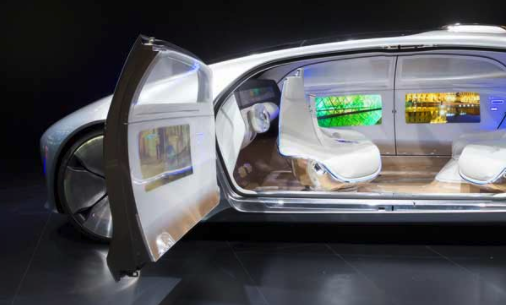“Will we need to learn to drive?” my son asked me recently.
Before I tell you what I told him as an answer, I want to give you an idea of why he asked me this question.
You see, right now, we’re at a moment when things that once seemed permanent are now in question.
Cars and driving are one of these things. Just to get a sense of car history, consider this:
Nelson Jackson, Sewall Crocker and their dog, Bud, made the first successful transcontinental automobile trip in 1903. Car technology was primitive. They relied on stagecoaches to ferry spare parts.
One time a cow had to tow them. And another time, a team of horses had to be sent to get them out of a Vermont bog. The 4,500-mile journey took 63 days, 12 hours and 30 minutes.
Few then would have imagined what would happen next.
An Insane Level of Growth
Incredibly, the U.S. went from 800 cars in 1900 to 458,500 in 1910 to 8.2 million cars by 1920 to 253 million now. That’s an insane level of growth.
And car growth has exploded even higher in recent years. In 2016, U.S. vehicle sales totaled 17.55 million. That beats 2015’s record of 17.47 million and was the seventh consecutive year of unprecedented growth.
However, I’m incredibly pessimistic about car sales because I believe that we’ve seen their peak.
In 10 years, we’ll have fewer cars on the road. And fewer still in 20. That’s why I told my son it’s unlikely he’d need to learn to drive.
The reason I’m so pessimistic is because new innovations are going to wipe out cars as we know them.
A Total Wipeout for the Auto Industry
The average price of a car is $35,000, but the costs of traditional car ownership go far beyond the price tag. There is also interest paid on car loans, insurance, taxes, fuel and maintenance. Some expenses are nonobvious, such as parking, property taxes and construction costs for home garages, and the value of our time.
And according to research by the Bureau of Transportation Statistics, our cars are only used for about 4% of the day.
In other words, buying a car is one of the most wasteful expenses imaginable. If you take the 4% number at face value, it means a total wipeout for the auto industry. That’s because it means we could get by with 96% fewer cars if we had a system that uses the cars we own optimally.
This same study also says that, right now, as many as 25% of people are better off using ride-sharing services. These are services like Uber and Lyft that you can call from your smartphone.
I believe this study is right. The automobile of today is the equivalent of the horse and buggy-based transportation system of the 1800s. It’s primed to be replaced by a new transportation system that’s driven by electric, self-driving, internet-connected cars that will completely change transportation and, in time, life as we know it.
Waymo, the autonomous car unit of Google parent Alphabet, already has plans to start testing a new kind of transportation system.
“Because you’re accessing vehicles rather than owning, in the future, you could choose from an entire fleet of vehicle options that are tailored to each trip you want to make,” said Waymo CEO John Krafcik. People could claim the cars for a day, a week or even longer, he said. And, according to Krafcik, driverless cars could be completely redesigned, such as to include a dining area.
Now, many of you will think that this forecast is too strong. You’ll think that just because cars have endured for as long as they have, they’ll continue to be something that people rely on. And because of that, you’ll be tempted to buy car-company stocks as they go down.
However, don’t buy these stocks, however cheap they look. They are doomed.
Regards,

Paul Mampilly
Editor, Profits Unlimited
In this exciting NEW VIDEO, Wall Street legend and former multibillion hedge fund manager Paul Mampilly pulls back the curtain on the biggest investment opportunity in the market today. What insiders are calling “The Greatest Innovation in History,” this revolution will mint more millionaires and billions than any technology that came before it. Right now, the current market for this technology is just $235 billion, but given how fast this technology is moving experts predict it will soar to $19 trillion by 2020. But 8,000% growth is just the beginning—and now’s your chance to get in on the action. [CONTINUE TO VIDEO]
Source: Banyan Hill
